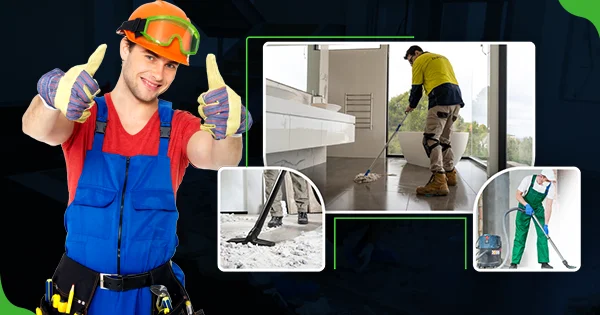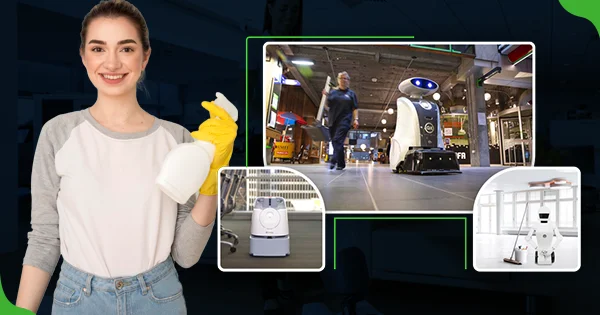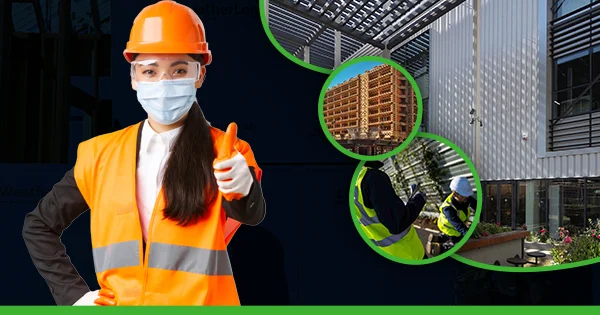In today’s world, sustainable building maintenance has become increasingly important. With the growing concern for the environment and the need to reduce our carbon footprint, it is crucial that we adopt sustainable practices in all aspects of our lives, including the maintenance of buildings. Sustainable building maintenance refers to the use of environmentally friendly practices and technologies to ensure the long-term viability and efficiency of a building. There are several benefits to implementing sustainable building maintenance practices. Firstly, it can lead to significant cost savings. By reducing energy consumption and water usage, building owners can save on utility bills and operating costs. Additionally, sustainable practices can extend the lifespan of building systems and materials, reducing the need for frequent repairs and replacements.
Furthermore, sustainable building maintenance has a positive impact on the environment. By reducing energy consumption and utilising renewable energy sources, buildings can significantly reduce their carbon emissions. This not only helps combat climate change but also improves air quality and reduces reliance on fossil fuels. Lastly, sustainable building maintenance can improve occupant comfort and well-being. By optimising HVAC systems, improving indoor air quality, and utilising natural lighting, occupants can enjoy a healthier and more comfortable living or working environment.
Understanding Energy Efficiency: Key Concepts and Benefits
Energy efficiency is a key concept in sustainable building maintenance. It refers to the use of technology and practices that reduce energy consumption while maintaining or improving performance. Energy efficiency is crucial because buildings are one of the largest consumers of energy globally.
There are several benefits to implementing energy-efficient practices in building maintenance. Firstly, it reduces energy consumption, which in turn reduces greenhouse gas emissions and helps combat climate change. By using less energy, buildings can also reduce their dependence on fossil fuels and contribute to a more sustainable energy future.
Secondly, energy efficiency leads to lower utility bills for building owners and occupants. By optimising systems such as lighting, HVAC, and appliances, buildings can significantly reduce their energy consumption and save on operating costs. This is especially important as energy prices continue to rise.
Lastly, energy-efficient buildings provide a more comfortable and healthier living or working environment. By optimising HVAC systems, buildings can maintain consistent temperatures and improve indoor air quality. This leads to increased occupant comfort, productivity, and overall well-being.
The Role of Building Envelopes in Energy Conservation
The building envelope plays a crucial role in energy conservation. It refers to the exterior elements of a building that separate the interior from the exterior environment. This includes walls, roofs, windows, doors, and insulation. Improving the building envelope is essential for reducing energy consumption and improving energy efficiency. One of the key strategies for improving the building envelope is insulation. Proper insulation helps to prevent heat transfer between the interior and exterior of a building, reducing the need for heating or cooling.
Another strategy for improving the building envelope is air sealing. Air leaks can significantly impact energy efficiency by allowing conditioned air to escape and outdoor air to enter. By sealing air leaks, buildings can reduce energy waste and improve indoor comfort. Additionally, windows and doors play a crucial role in the building envelope. Energy-efficient windows and doors are designed to minimise heat transfer and reduce drafts. This can significantly improve energy efficiency and occupant comfort.
Efficient Lighting Solutions: From LED to Smart Lighting Systems
Lighting is another important aspect of sustainable building maintenance. Traditional incandescent lighting consumes a significant amount of energy and is not environmentally friendly. However, there are several energy-efficient lighting solutions available today.
LED lighting is one of the most popular and efficient lighting options available. LED lights use significantly less energy than traditional incandescent bulbs and have a much longer lifespan. They also produce less heat, reducing the load on HVAC systems.
Smart lighting systems are another innovative solution for energy-efficient lighting. These systems utilise occupancy sensors and daylight harvesting to optimise lighting usage. Occupancy sensors detect when a room is unoccupied and automatically turn off lights, reducing energy waste. Daylight harvesting systems adjust artificial lighting levels based on the amount of natural light available, further reducing energy consumption.
By implementing energy-efficient lighting solutions, buildings can significantly reduce their energy consumption and save on utility bills. Additionally, these solutions provide better lighting quality and control, improving occupant comfort and productivity.
Harnessing Renewable Energy: Solar, Wind, and Geothermal Technologies
Renewable energy sources play a crucial role in sustainable building maintenance. By harnessing the power of the sun, wind, and geothermal heat, buildings can reduce their reliance on fossil fuels and significantly reduce their carbon emissions.
Solar energy is one of the most popular renewable energy sources for buildings. Solar panels convert sunlight into electricity, which can be used to power various building systems and appliances. This energy is clean, abundant, and renewable, making it an excellent choice for sustainable building maintenance.
Wind energy is another renewable energy source that can be harnessed for buildings. Wind turbines convert the kinetic energy of the wind into electricity. While wind turbines are typically larger and more suitable for commercial or industrial buildings, smaller-scale wind turbines can also be used for residential buildings.
Geothermal energy utilises the heat from the earth to provide heating and cooling for buildings. Geothermal systems use underground pipes to transfer heat to or from the ground, depending on the season. This provides a consistent and efficient source of heating and cooling throughout the year.
By harnessing renewable energy sources, buildings can significantly reduce their carbon emissions and contribute to a more sustainable future. Additionally, renewable energy systems can provide long-term cost savings by reducing reliance on traditional energy sources.
Optimising HVAC Systems for Energy Savings
HVAC (Heating, Ventilation, and Air Conditioning) systems are some of the largest consumers of energy in buildings. Therefore, optimising HVAC systems is crucial for energy savings and sustainable building maintenance.
Regular maintenance is essential for ensuring the efficiency and performance of HVAC systems. This includes cleaning or replacing air filters, checking refrigerant levels, and inspecting ductwork for leaks. Regular maintenance can improve energy efficiency, extend the lifespan of equipment, and prevent costly breakdowns.
Upgrading to energy-efficient HVAC equipment is another strategy for optimising energy savings. Energy-efficient HVAC systems use advanced technologies to reduce energy consumption while maintaining or improving performance. This includes variable speed motors, high-efficiency compressors, and smart controls.
Additionally, implementing zoning systems can further optimise energy savings. Zoning systems divide a building into different zones and allow for individual temperature control in each zone. This ensures that heating or cooling is only provided where it is needed, reducing energy waste.
By optimising HVAC systems, buildings can significantly reduce their energy consumption and save on operating costs. Additionally, efficient HVAC systems provide better indoor comfort and air quality for occupants.
Water Conservation: Strategies for Reducing Usage and Waste
Water conservation is another important aspect of sustainable building maintenance. With water scarcity becoming a global issue, it is crucial that buildings implement strategies to reduce water usage and waste.
One of the most effective strategies for water conservation is the use of low-flow fixtures. Low-flow toilets, faucets, and showerheads are designed to use less water without sacrificing performance. These fixtures can significantly reduce water usage in buildings without compromising occupant comfort.
Rainwater harvesting is another innovative strategy for water conservation. Rainwater can be collected from rooftops and stored in tanks or cisterns for later use. This water can be used for irrigation, toilet flushing, or other non-potable uses, reducing the demand for municipal water.
Additionally, leak detection and repair are crucial for water conservation. Even small leaks can waste a significant amount of water over time. Regular inspections and maintenance can help identify and repair leaks, reduce water waste and save on utility bills.
Building Automation and Smart Controls: Enhancing Efficiency and Comfort
Building automation refers to the use of technology to control and monitor building systems and operations. It plays a crucial role in sustainable building maintenance by enhancing energy efficiency and occupant comfort.
Smart controls are a key component of building automation. These controls utilise sensors, algorithms, and advanced technologies to optimise the performance of building systems. Smart thermostats can learn occupant preferences and adjust temperature settings, accordingly, reducing energy waste.
Occupancy sensors are another important smart control technology. These sensors detect when a room is unoccupied and automatically adjust lighting, HVAC, or other systems accordingly. This helps reduce energy waste by ensuring that systems are only operating when needed.
Additionally, building automation systems can provide real-time data on energy consumption, indoor air quality, and other performance metrics. This data can be used to identify energy-saving opportunities, optimise system performance, and improve overall building efficiency.
The Power of Data: Utilising Energy Monitoring and Analytics
Data plays a crucial role in sustainable building maintenance. By collecting and analysing data on energy consumption, system performance, and occupant behaviour, buildings can identify energy-saving opportunities and optimise their operations.
Energy monitoring systems provide real-time data on energy consumption in buildings. This data can help identify patterns, trends, and anomalies in energy usage. By understanding how energy is being consumed, building owners can make informed decisions on how to reduce energy waste.
Energy analytics takes data analysis a step further by utilising advanced algorithms and machine learning to identify energy-saving opportunities. By analysing large datasets, energy analytics systems can identify inefficiencies, recommend optimisations, and predict future energy consumption.
By utilising energy monitoring and analytics, buildings can significantly improve their energy efficiency and reduce their carbon emissions. Additionally, data-driven decision-making can lead to cost savings, improved occupant comfort, and overall sustainability.
Conclusion
In conclusion, sustainable building maintenance is crucial for reducing our carbon footprint, saving on operating costs, and improving occupant comfort. By implementing strategies such as energy efficiency, optimising building envelopes, utilising renewable energy sources, and conserving water, buildings can significantly reduce their environmental impact and contribute to a more sustainable future.
Additionally, technologies such as smart lighting systems, building automation, and energy monitoring and analytics play a crucial role in optimising energy efficiency and overall building performance. Real-life case studies demonstrate that sustainable building maintenance is not only possible but also economically viable. It is essential for building owners, managers, and occupants to prioritise sustainable building maintenance and implement these strategies in their own buildings. By doing so, we can create a more sustainable future for generations to come.










